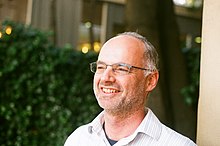
Peter Teichner (born June 30, 1963 in Bratislava, Czechoslovakia) is a German mathematician and one of the directors of the Max Planck Institute for Mathematics in Bonn. His main areas of work are topology and geometry.

Peter Teichner (born June 30, 1963 in Bratislava, Czechoslovakia) is a German mathematician and one of the directors of the Max Planck Institute for Mathematics in Bonn. His main areas of work are topology and geometry.
In 1988, Peter Teichner graduated from the University of Mainz with a degree in mathematics. After graduating, he worked for one year in Canada, funded by the "Government of Canada Award", at McMaster University in Hamilton (Ontario). From 1989 to 1990 he was affiliated with the Max Planck Institute for Mathematics. From 1990 to 1992 he worked at the University of Mainz as a research assistant, and in 1992 he received his doctorate with Matthias Kreck as his advisor. The title of his doctoral thesis was Topological four-manifolds with finite fundamental group.
With a Feodor Lynen Scholarship from the Humboldt Foundation, he went to UC San Diego from 1992 to 1995 and collaborated with Michael Freedman. In 1995 he worked at the Institut des Hautes Études Scientifiques in Bures-sur-Yvette, France. From 1995 to 1996 he was again at the University of Mainz. From 1996 to 1997 he was at UC Berkeley as a Miller Research Fellow. From 1996 he was an associate professor at UC San Diego, and in 1999 he was granted tenure. He stayed at UC San Diego until 2004, [1] since then he has been a full professor at UC Berkeley, where he retired in 2019. He has been a director at the Max Planck Institute for Mathematics in Bonn since 2008. He has also been the managing director from 2011 until 2019. [2]
His students include Arthur Bartels, James Conant, and Christopher Schommer-Pries.
Peter Teichner's work lies in the field of topology, which deals with qualitative properties of geometric objects.
His early achievements were on the classification of 4-manifolds. Together with the Fields medalist Mike Freedman, Peter Teichner made contributions to the classification of 4-manifolds whose fundamental group only grows sub-exponentially.
Later in his career, he moved on to study Euclidean and topological field theories. In particular, in an ongoing project, Peter Teichner and Stephan Stolz try to refine the mathematical term quantum field theory in such a way that deformation classes of quantum field theories can be interpreted as a qualitative property of a manifold. [3] More specifically, these should form a cohomology theory. The emerging language should be flexible enough to formulate new physical theories, but also so precise that predictions can be made about the impossibility of certain combinations of space-time and quantum fields. This is known as the Stolz-Teichner program.

In mathematics, differential topology is the field dealing with the topological properties and smooth properties of smooth manifolds. In this sense differential topology is distinct from the closely related field of differential geometry, which concerns the geometric properties of smooth manifolds, including notions of size, distance, and rigid shape. By comparison differential topology is concerned with coarser properties, such as the number of holes in a manifold, its homotopy type, or the structure of its diffeomorphism group. Because many of these coarser properties may be captured algebraically, differential topology has strong links to algebraic topology.
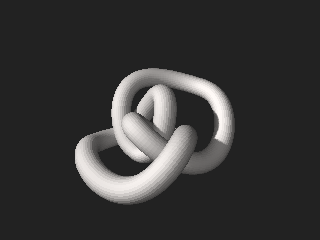
Topology is the part of mathematics concerned with the properties of a geometric object that are preserved under continuous deformations, such as stretching, twisting, crumpling, and bending; that is, without closing holes, opening holes, tearing, gluing, or passing through itself.

Algebraic topology is a branch of mathematics that uses tools from abstract algebra to study topological spaces. The basic goal is to find algebraic invariants that classify topological spaces up to homeomorphism, though usually most classify up to homotopy equivalence.
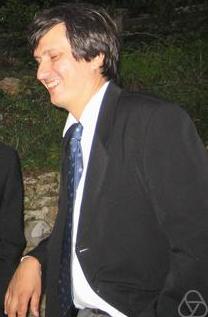
Maxim Lvovich Kontsevich is a Russian and French mathematician and mathematical physicist. He is a professor at the Institut des Hautes Études Scientifiques and a distinguished professor at the University of Miami. He received the Henri Poincaré Prize in 1997, the Fields Medal in 1998, the Crafoord Prize in 2008, the Shaw Prize and Breakthrough Prize in Fundamental Physics in 2012, and the Breakthrough Prize in Mathematics in 2015.

Michael Hartley Freedman is an American mathematician at Microsoft Station Q, a research group at the University of California, Santa Barbara. In 1986, he was awarded a Fields Medal for his work on the 4-dimensional generalized Poincaré conjecture. Freedman and Robion Kirby showed that an exotic R4 manifold exists.

Friedrich Ernst Peter Hirzebruch ForMemRS was a German mathematician, working in the fields of topology, complex manifolds and algebraic geometry, and a leading figure in his generation. He has been described as "the most important mathematician in Germany of the postwar period."

The Max Planck Institute for Mathematics is a research institute located in Bonn, Germany. It is named in honor of the German physicist Max Planck and forms part of the Max Planck Society (Max-Planck-Gesellschaft), an association of 84 institutes engaging in fundamental research in the arts and the sciences. The MPIM is the only Max Planck institute specializing in pure mathematics.
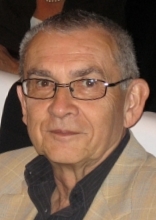
Yuri Ivanovich Manin was a Russian mathematician, known for work in algebraic geometry and diophantine geometry, and many expository works ranging from mathematical logic to theoretical physics.

Mathai Varghese is a mathematician at the University of Adelaide. His first most influential contribution is the Mathai–Quillen formalism, which he formulated together with Daniel Quillen, and which has since found applications in index theory and topological quantum field theory. He was appointed a full professor in 2006. He was appointed Director of the Institute for Geometry and its Applications in 2009. In 2011, he was elected a Fellow of the Australian Academy of Science. In 2013, he was appointed the Elder Professor of Mathematics at the University of Adelaide, and was elected a Fellow of the Royal Society of South Australia. In 2017, he was awarded an ARC Australian Laureate Fellowship. In 2021, he was awarded the prestigious Hannan Medal and Lecture from the Australian Academy of Science, recognizing an outstanding career in Mathematics. In 2021, he was also awarded the prestigious George Szekeres Medal which is the Australian Mathematical Society’s most prestigious medal, recognising research achievement and an outstanding record of promoting and supporting the discipline.
The Oswald Veblen Prize in Geometry is an award granted by the American Mathematical Society for notable research in geometry or topology. It was funded in 1961 in memory of Oswald Veblen and first issued in 1964. The Veblen Prize is now worth US$5000, and is awarded every three years.
In mathematics, topological modular forms (tmf) is the name of a spectrum that describes a generalized cohomology theory. In concrete terms, for any integer n there is a topological space , and these spaces are equipped with certain maps between them, so that for any topological space X, one obtains an abelian group structure on the set of homotopy classes of continuous maps from X to . One feature that distinguishes tmf is the fact that its coefficient ring, (point), is almost the same as the graded ring of holomorphic modular forms with integral cusp expansions. Indeed, these two rings become isomorphic after inverting the primes 2 and 3, but this inversion erases a lot of torsion information in the coefficient ring.
The Geometry Festival is an annual mathematics conference held in the United States.
Arithmetic topology is an area of mathematics that is a combination of algebraic number theory and topology. It establishes an analogy between number fields and closed, orientable 3-manifolds.
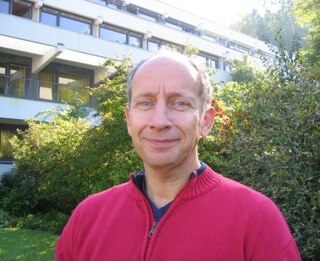
Wolfgang Lück is a German mathematician who is an internationally recognized expert in algebraic topology.

Matthias Kreck is a German mathematician who works in the areas of Algebraic Topology and Differential topology. From 1994 to 2002 he was director of the Oberwolfach Research Institute for Mathematics and from October 2006 to September 2011 he was the director of the Hausdorff Center for Mathematics at the University of Bonn, where he is currently a professor.

Peter Scholze is a German mathematician known for his work in arithmetic geometry. He has been a professor at the University of Bonn since 2012 and director at the Max Planck Institute for Mathematics since 2018. He has been called one of the leading mathematicians in the world. He won the Fields Medal in 2018, which is regarded as the highest professional honor in mathematics.

Werner Nahm is a German theoretical physicist. He has made contributions to mathematical physics and fundamental theoretical physics.

Ralph Martin Kaufmann is a German mathematician working in the United States.
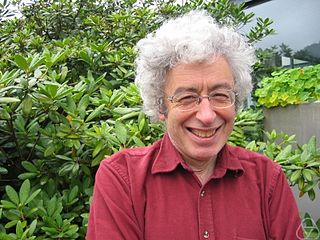
Andrew Alexander Ranicki was a British mathematician who worked on algebraic topology. He was a professor of mathematics at the University of Edinburgh.

Zhenghan Wang is a Chinese-American mathematician. He is a principal researcher at Microsoft Station Q, as well as a professor of mathematics at the University of California, Santa Barbara.